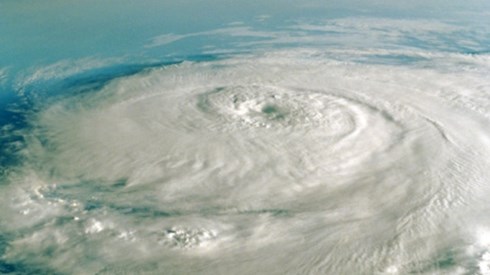Insurance-Linked Securities (ILS) Market Explained

December 09, 2015

Captive.com recently sat down with Aaron Koch, FCAS, MAAA, a director and consulting actuary with the Insurance-Linked Securities Group, P&C Division, at Milliman to discuss this market. The following question-and-answer discussion is intended to provide the reader with a basic understanding of this evolving product and its potential impact on the traditional reinsurance markets going forward.

Captive.com: Can you define "insurance-linked securities" for us? How do catastrophe bonds and alternative capital fit into this definition?
Mr. Koch: Insurance-linked securities (ILS) are financial securitizations of insurance risks. They allow investors such as pension funds and hedge funds to "take the place" of reinsurers on certain classes of business, primarily property catastrophe. Investors have always been interested in taking insurance risks—after all, they are the ultimate source of capital for the reinsurance industry. ILS allows investors to participate directly in the reinsurance market, without the use of a reinsurer's balance sheet.
Catastrophe bonds are the most well-known type of ILS and are generally the largest ILS transactions (typically offering coverage limits in the hundreds of millions of dollars). They are structured as tradable securities that pay a fixed coupon; in exchange, the investor puts up a fully collateralized coverage limit—like the principal of a bond—that is held in trust. Should a triggering event occur, the money is released to the bond seller.
As the market has continued to mature, investors have diversified their holdings to include a range of other reinsurance-related instruments, some of which go beyond ILS. As a result, the term "alternative capital" has become popular as a way to describe the phenomenon of "financial investors writing reinsurance" under a single umbrella.
Captive.com: How long has this market been around? What has its growth rate been?
Mr. Koch: The alternative capital market has been around since the early 1990s but really came into its own following the series of major hurricanes in 2004 and 2005. The total size of the market at that time (measured by the amount of written coverage limit) was around USD $12 billion, and within the last 10 years that has grown to around USD $70 billion.
Captive.com: What has the impact of ILS been on the traditional reinsurance markets that captive owners are familiar with?
Mr. Koch: There have been at least three major impacts: reductions in prices, loosening of terms and conditions, and an increase in reinsurance mergers and acquisitions (M&A) activity.
ILS provides a product that competes with traditional reinsurance. The increased supply of risk-taking capacity has led to reductions in the price of coverage, particularly on property catastrophe business. Alternatively, some contracts have seen their terms and conditions changed in a way that benefits the cedent, often by including more risk or by otherwise making it more likely for the contract to pay out (e.g., by extending the "hours clause," which defines the length of a catastrophe event).
The increased competition in the market has also helped drive a wave of M&A activity, as reinsurers seek to gain economies of scale and diversify their writings away from the property catastrophe market.
Captive.com: Two follow-up questions: (1) What do you see as the market impact of ILS in the next 3–5 years? (2) Do you see the ILS market evolving to cover other risks?
Mr. Koch: The ILS market is at an interesting crossroads. In my opinion, the first wave of ILS growth has largely passed. The traditional sources of risk—primarily large insurance and reinsurance companies—seem comfortable with the amount of ILS they currently buy. The market has reached somewhat of a steady state among these participants.
However, there is still a huge amount of investment capital looking to enter the market. As a result, ILS is poised to grow over the next 3 to 5 years through product innovation. There are two major vectors for this growth. One is market expansion to cover different types of insurance risk. Examples include the recent rise in specialty insurance transactions and the ongoing efforts to bring liability risk to the ILS market.
Perhaps more interesting to captive owners, however, is a recent trend toward expanding the ILS market to a more diverse range of cedents. The ILS market's willingness to invest in smaller, more customized transactions is high. This provides opportunities for cedents that do not have enough scale to sponsor a full-sized catastrophe bond to still purchase coverage. Investors have been willing to sponsor innovative transactions to accommodate the needs of new cedents—and this is something where captives will likely take advantage.
Captive.com: Aaron, from your perspective, why might captive owners want to look more closely at the ILS market?
Mr. Koch: ILS provides a powerful new tool for transferring catastrophe risk. Many captives have historically relied on the traditional reinsurance market to take on a large portion of this risk. Depending on the situation, ILS may allow a captive to secure a lower cost of coverage, build a customizable payout structure, or even obtain coverage when the captive's needs exceed what the traditional reinsurance market is willing to provide.
ILS won't be right for every captive, and it's important to remember that the alternative capital market is still relatively young and in the process of expanding its product offerings. That said, the prospects for captive ILS transactions have already improved significantly compared with a few years ago and should continue to do so in the future.
Captive.com: Can you provide specific examples where current captives have used the ILS market?
Mr. Koch: There are two notable examples of captive-sponsored catastrophe bonds that were issued this year. One provides Kaiser Permanente's captive with protection against earthquakes on the U.S. West Coast, and the other provides Amtrak's captive with protection against U.S. hurricanes and earthquakes. Each transaction provided its sponsor with USD $250 million or more of limit for 3 years, which allowed the sponsors to lock in their reinsurance costs now while the market is soft.
These bonds demonstrate that captives are beginning to utilize ILS as a large-scale component of their risk transfer programs. Corporate risk is one of the most promising frontiers for today's ILS investors, and these transactions may be early indications of a trend toward more ILS coverage of captive risk over the next several years.
Captive.com: Thanks, Aaron. If readers have specific questions or have interest in looking into the ILS market, how can they contact you?
Mr. Koch: Thanks for your questions! I can be reached by email or phone: (781) 213–6272.
(Photo above of Aaron Koch is courtesy of Milliman.)
December 09, 2015